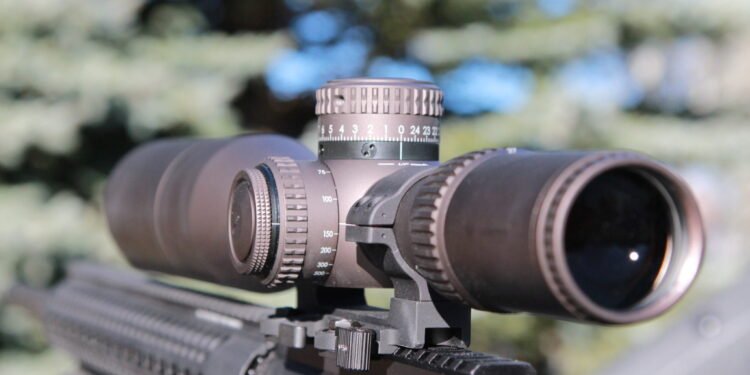Last Updated on April 26, 2024 by Flavia Calina
Introduction to Optical Sighting
The journey from rudimentary iron sights to the sophisticated scopes of today is a testament to the evolution of shooting accuracy. Scopes have become essential for anyone looking to improve their marksmanship, for sport, hunting, or tactical applications. It is here, within the precision of a lens, that the true potential of a marksman is realized. When shooters look to equip themselves with top-notch gear, they often seek a Burris spotting scope Canada for its renowned clarity and precision. By starting with a quality optical sighting system, novices and experts can significantly enhance their shooting experience.
The Anatomy of a Modern Rifle Scope
A modern rifle scope consists of a complex arrangement of lenses and an aiming reticle within a durable, weather-resistant tube. The objective lens captures the image, while the eyepiece lens magnifies it, allowing a more transparent and precise view of the target. Reticles have evolved to offer various patterns, from the traditional crosshairs to more complex designs that factor in windage, elevation, and bullet drop. This diversity caters to many shooting conditions and preferences. The objective lens’s magnification and diameter are paramount in deciding the scope’s usability for a given situation, directly affecting its light-gathering capabilities and field of view.
Scope Mounting and Adjustment Secrets
Mounting a scope may seem straightforward, but precision is necessary to ensure maximum accuracy. The technique involves carefully aligning the scope with the rifle’s bore and securing it firmly to maintain consistency between shots. Additionally, understanding how to adjust for a minute of angle (MOA) is crucial when zeroing a scope. Each click of the adjustment knob subtly changes the bullet’s point of impact, refining the aim to reach that perfect shot. Furthermore, the shooter must be aware of parallax issues and know how to use the parallax adjustment knob to eliminate potential aiming errors, particularly at long ranges.
Innovations in Scope Technology
As shooters push the boundaries of precision, scope manufacturers meet the challenge with groundbreaking innovations. First focal plane (FFP) and second focal plane (SFP) reticles provide options for shooters to choose how the reticle size changes with magnification. In the FFP design, the reticle size scales with the magnification change, maintaining the same perspective of the reticle size as the target. SFP reticles remain the same size across magnifications, generally preferred for their clear view at high magnification levels. Beyond the reticle plane, modern scopes may include:
- Features like integrated ballistic calculators.
- Enhancing long-range shots.
- Various vision technologies facilitate aiming in low-light or complete darkness.
Material and Construction: Durability Meets Precision
Longevity and consistent performance under different environmental conditions are paramount considerations in scope design. High-quality materials, such as aircraft-grade aluminum, are commonly used in premium scopes for their strength-to-weight ratio. Waterproof and fog-proof features are standard among high-end models, ensuring that the scope’s internal mechanisms remain clear and unaffected by weather. The construction quality not only preserves the clarity of the image but also withstands the shock and vibration associated with the recoil, making it a long-term companion to the rifle.
Balancing Budget and Performance in Scope Selection
Scopes are available across a broad price spectrum, and it can be challenging for buyers to decide how much to invest. It’s critical to recognize that while high-end scopes offer the best features, many mid-range and budget-friendly scopes provide excellent value for money. The scope’s optical clarity, robustness, reticle design, and ease of use are key features to consider. Ownership costs go beyond the initial purchase; a high-priced scope with a lifetime warranty and reliable customer service can save money on repairs or replacements in the long run.
The Role of Scopes in Competitive Shooting
The rise of competitive shooting sports has further cemented the role of scopes in precision shooting. The scope specifications can give competitors the edge in action-packed disciplines like 3-gun competitions or long-range shooting events. Shooters must select scopes with appropriate magnification, reticle design, and adjustment capabilities specific to their event. Moreover, competitions’ rapid pace and varied distances often require scopes with fast focus features and versatile magnification ranges.
Scopes in Wildlife Conservation and Management
Hunting scopes directly impact wildlife conservation by enabling ethical hunting practices. Accurate shots reduce the chances of wounding animals, ensuring a humane hunt. This precision, afforded by technologically advanced scopes, also helps maintain the balance in ecosystems by allowing for selective and controlled hunting. Conservationists recognize and support the responsible use of high-quality scopes for these critical activities, which aligns with sustainable management practices.
The Intersection of Law Enforcement and Scopes
Using law enforcement and military scopes is profound, where precision can mean the difference between life and death. For snipers and tactical units, scopes provide the clarity and accuracy needed to resolve critical situations safely. The reliability and ruggedness of these tools, combined with the ongoing training for officers, ensure successful missions and uphold public safety. Integrating modern scope types with traditional tactical knowledge amplifies the capabilities of law enforcement personnel in the field.
Preparing for the Future: What’s Next in Scope Tech?
The unrelenting pace at which scope technology advances suggests a future where the shooting experience is intertwined with digital innovation. The potential integration of augmented reality elements into scopes could dramatically transform how sharpshooters interact with their environment. Introducing unprecedented information and assistance. As these technologies evolve, there will undoubtedly be new regulatory considerations and shifts in public perception. To stay ahead of these developments, enthusiasts should keep an eye on insights from industry experts. Which herald what might lie on the horizon for scope technology. Read more exciting articles on Today World Info
Key Takeaways
- Understanding the technology behind modern scopes can significantly improve shooting accuracy.
- Technological advancements like smart scopes and thermal imaging are shaping the future of shooting.
- Making an informed scope decision is critical for balancing the budget and performance of various applications.










